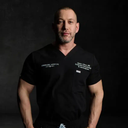Thank you for your question. You’re about volume to create the effect you would get with a cheek implant with an injectable filler versus fat transfer. You’re asking if there are more permanent solutions for cheek volume, why wouldn't someone choose a more permanent solution such as a cheek implant or fat grafting as opposed to filler as you describe every 2 years? And also, does technique matter?





